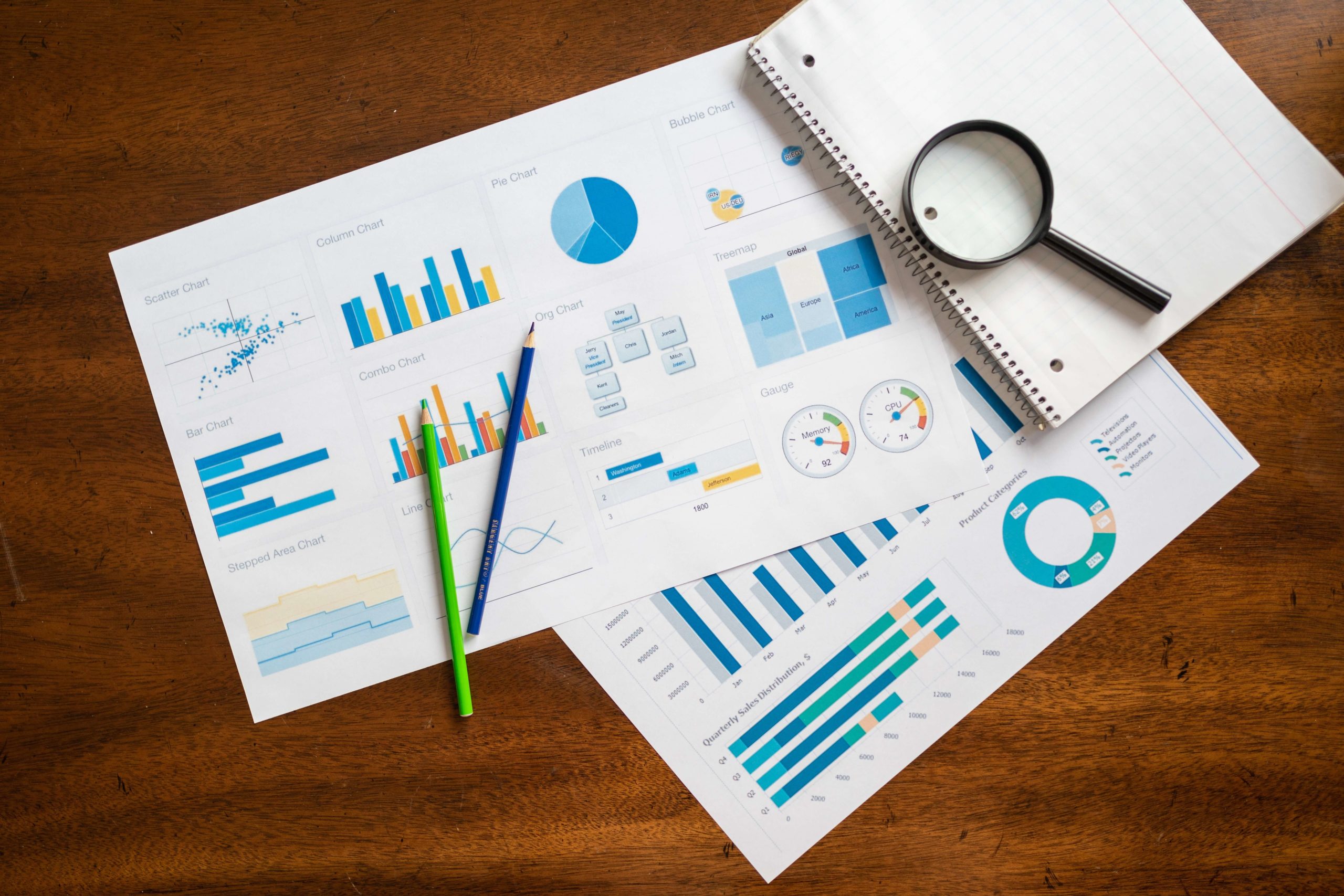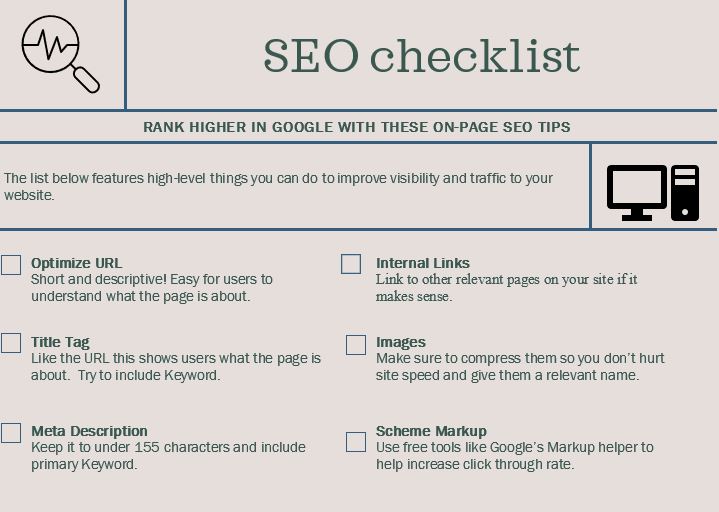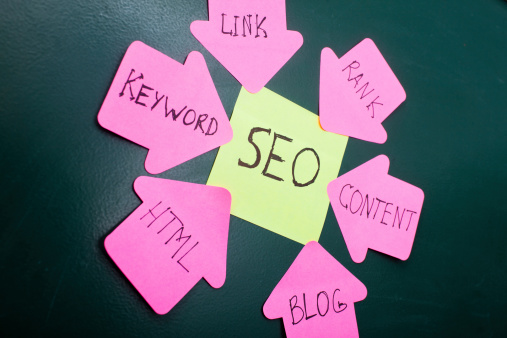What is On Page SEO?
On-page SEO involves the process of optimizing web page content with the goal of ranking higher on relevant search engines like Google. As you might imagine, the term “on-page” refers to any content and HTML source code that can be adjusted to improve visibility and traffic to the page, and might include adding keywords or making changes to things like title tags, headings, content and internal links.

Types of SEO Content?
While this list is by no means exhaustive, there are several different types of SEO content you can expect to see regularly.
• Product Pages – Customers and users always visit product pages, which could serve as SEO content or a PPC landing page.
• Blog Posts – Blogs are entertaining and a great draw for new users and customers, in addition to providing a regular flow of SEO content for your site. Blog posts are often useful for creating links, which will organically create a good reputation for your site and business.
• Articles – This will include any type of news, interview or piece that mentions your product, business or touches on your niche or industry. You’ll find these types of articles on most news or informative types of websites.
• Lists – Framing an article as a list will attract an audience looking for quick info, and are quite attractive when linked to search engine results or when they appear on social media platforms or pages.
• Guides – A guide should give detailed information on how to do or use something, and are often downloadable or broken up into different pages. Many post an abbreviated version or excerpt on their site, and use link clicks or pop-ups to generate leads.
• Videos – Videos are very clickable and often move up the search engine rankings faster than text documents. Videos come in a variety of formats including marketing and promotional, explainers, or even short product promos.
• Infographics – Infographics are easy and fast to read, and great for attracting traffic with an eye for fast info and statistics. There are multiple open-source options for creating compelling infographics without hiring a graphic designer, but you must ensure your infographic is well organized, and matches the look, feel and voice of your company and webpage.
• Directories – Giving customers a platform from which to launch their own research is a great way to attract traffic to your page. For example, an automobile manufacturer might link too or create a directory on where to purchase their products, or what features make their product special.

The purpose of optimizing your on-page SEO is to prove to Google or other search engines that the searcher intent has been satisfied. Search engines track the dwell time and clicks on sites, and use this data to determine if the page indeed deserves it’s high ranking. High-level search intent includes 4 different methods:
- Informational: Users looking for information
- Navigational: Users trying to find a specific page
- Commercial: Users researching a product before purchase
- Transactional: Users ready to purchase
On Page SEO Checklist: How Do You Know When Your SEO Content is Optimal?
Once on your SEO journey, how can you determine if you have met your goals? There is far more to SEO than “stuffing” a page with as many keywords as possible. For your content to achieve a high ranking in 2021, you must optimize your content for the following elements:
- User experience – how users rate your page for informative content and legitimate information
- Bounce Rate and Dwell Time – how fast users “bounce” off your page or how long they “dwell” and browse your material
- Search Intent – are users finding the information you promised and that they were searching for on your page
- Page loading speed – how fast does your page load, and are users bouncing because of a longer than average load time
- Click-through-rate – how fast are users clicking through your content and links to reach other pages of content

Keywords in your SEO Content
Keywords are the most critical part of your SEO content, and you can use them in many ways. Keywords are most effective when used in your titles, descriptions, heading, images and alt text, URLs and content. Once you’ve determined where you can add keywords, use an SEO search tool like Ahrefs, SEMrush, and Ubersuggest to come up with more keywords related to your topic.
You can choose to utilize individual words or even phrases, and with the help of a professional search tool, these are easy and fast to discover. “Stuffing” a ridiculous number of keywords into content won’t necessarily help you on your SEO path. Search engines are not often fooled by an overabundance of keywords, and these pages might achieve a high ranking when first published, but will soon fall down or off the ranking list.
Title tags and meta descriptions
Title tags are attached to every page and appear in search results as a headline. A meta description is a short bio of what the user can expect to find on your page. The space for title tags and meta descriptions is limited, meaning you must keep them under a certain word count to ensure they are fully visible on the search results page.
The biggest difference between title tags and meta descriptions, is that title tags directly affect on-page SEO rankings, while meta descriptions are simply informative but have no direct SEO ranking value. To ensure your on-page SEO title tags and descriptions are effective, there are several easy steps to follow:
- Primary keywords should be in the title, and should appear near the beginning.
- Use a maximum of 55-60 characters in your title, to ensure your content isn’t cut off.
- Never use all caps in your titles.
- Ensure each page is unique, and don’t duplicate titles, which will move you down the search engine rankings.
- Keep your titles clear, concise and easy to understand.
- If your primary keyword is included in your meta description, Google will “bold” the keyword when someone searches for it.
- Ensure the meta description is at or under 155 characters.

Don’t forget Images!
In much the same way video attracts search engine attention, on-page images tend to boost traffic. Including images means Google is ranking your page on both your content, and in any image searches, which can bring a significant amount of traffic to your site. Use detailed names for your images. An image with the filename airpurifier.jpg is much better than a general image name like IMG_83784.jpg.
Rename your images with as much detail as possible. For example, instead of “air purifier” you want to name your image file something like “air-purifier-clean-affordable-ecofriendly.jpg. Finally, using original images is proven to drive search engine traffic and help rankings, so feel free to get creative!
Internal Linking
Internal links are critical to helping search engines understand your page. By linking your different pages together, Google can follow your descriptive text to determine which pages are the most important, and what information on them is the most vital to searchers. Internal links are also great to drive site traffic to areas of your site that are the most useful, and to products or pages you want to highlight. Internal links are different from backlinks, in that they don’t have a massive effect on search rankings, but still drive traffic.

Regularly analyze SEO Content
On-page SEO must be performed regularly, to keep up with the most current search results. Searchers use new and different search terms for the same products daily, and you can also make use of any trending search terms unrelated to your business, to drive traffic to your page. A good measurement of the success of your page can be found in the number of views or links to your page, or even comments, social media shares or conversion rates. Ultimately, your analysis should determine Your analysis should have two goals: to duplicate your successes, and to keep your content updated and cutting-edge.
For help or more information on your on-page SEO services, visit Apogee Results online today, or reach out to our friendly SEO experts, who can guide you through the SEO on-page process to ultimate success.
Want Insight on your SEO?
Fill out the form below to request a complementary evaluation of your digital marketing today.

